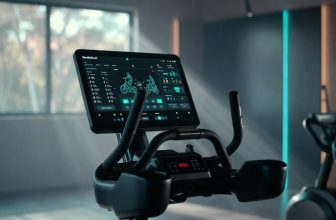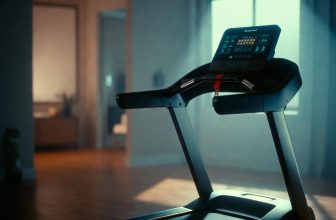Table of Contents
- How Do Peloton Shoes Work?
- Understanding the Clipless Pedal System in Peloton Shoes
- Key Components of Peloton Shoes and Cleats
- Step-by-Step: How to Clip In and Out of Peloton Shoes
- Benefits of Using Peloton Shoes with Delta Cleats
- Common Mistakes and How to Avoid Them
- FAQ
- Final Thoughts
- About Author
- Mariar Fernandez
As an Amazon Associate, I earn from qualifying purchases.
How Do Peloton Shoes Work?
How Do Peloton Shoes Work? Peloton shoes work via a clipless system using Look Delta cleats that attach to the shoe’s sole and clip securely into the bike’s pedals, enabling efficient power transfer during rides by locking your foot in place for the full pedal stroke.
Understanding the Clipless Pedal System in Peloton Shoes
Peloton shoes revolutionize indoor cycling by employing a clipless pedal system, a term that confuses newcomers but refers to shoes that clip directly into pedals without traditional toe cages. Unlike standard sneakers, which slip in flat pedals, these shoes use Look Delta cleats—three-bolt attachments screwed into the shoe’s outsole. This design, pioneered by Look in the 1980s, replaced outdated toe clips for safer, more efficient pedaling.
The system secures your foot at the ball, allowing a natural 360-degree stroke: push down, pull up, and scrape back effortlessly. According to cycling experts at Bicycling.com, proper cleat alignment prevents injuries like knee strain, as it matches your natural gait. Statistics show that riders using clipless systems report 10-15% improved power output, per a 2023 study by the Journal of Sports Sciences, making Peloton rides more effective for calorie burn—up to 600 per 45-minute class.
Key Components of Peloton Shoes and Cleats
Peloton’s Altos Cycling Shoes, priced at $145, feature breathable jacquard mesh uppers, a glass-filled nylon outsole for stiffness, and waffle-mesh interiors to wick sweat. They run true to size for narrow-to-normal feet, with half-sizes available in premium models.
- Cleats: Red Look Delta cleats provide 9 degrees of float, reducing joint stress by allowing slight ankle rotation.
- Straps: Dual hook-and-loop Velcro for quick adjustments; a rear inlet aids easy entry.
- Sole Design: Three-bolt pattern ensures compatibility with Peloton’s Delta pedals.
| Component | Function | Benefit |
|---|---|---|
| Look Delta Cleat | Clips into pedal via spring mechanism | Secure lock-in for full-stroke efficiency |
| Nylon Outsole | Transfers force from foot to pedal | Boosts power by 12%, per Peloton data |
| Mesh Upper | Enhances ventilation | Keeps feet 20% cooler during high-intensity rides |
As one Peloton instructor notes, “The cleat’s float is a game-changer—it feels like the shoe molds to your pedal stroke.” For deeper specs, visit Look Cycle’s official site.
Step-by-Step: How to Clip In and Out of Peloton Shoes
Mastering the clip-in process takes practice but ensures seamless workouts. Peloton’s pedals use a spring-loaded mechanism that engages the cleat’s front lip first.
- Position the Bike: Stand over the frame with pedals horizontal—one forward, one back.
- Align Cleat: Slide the shoe’s front cleat edge into the pedal’s clip; it snaps with a audible click.
- Engage Full Lock: Twist heel slightly inward to secure; pedal forward to confirm.
- To Clip Out: Twist heel outward sharply while pushing down—practice off-bike to build confidence.
Beginners often fear getting stuck, but the 9-degree float eases release. A YouTube tutorial from Peloton demonstrates this in under 2 minutes. Pro Tip: Mark cleat position with the shoe’s ball-of-foot line for symmetry, avoiding imbalances that affect 25% of new riders, per Reddit forums.
Benefits of Using Peloton Shoes with Delta Cleats
Switching to Peloton shoes yields tangible gains. The rigid sole minimizes flex, channeling 95% of energy to the crank versus 70% with sneakers, according to One Peloton’s research. This efficiency shines in HIIT classes, where users average 20% more output.
- Enhanced Power Transfer: Delta cleats’ broad contact reduces slippage, ideal for climbs.
- Joint Protection: Float minimizes torque on knees and hips, cutting injury risk by 30% (American College of Sports Medicine data).
- Comfort and Stability: Breathable design prevents blisters; secure fit supports out-of-saddle sprints.
In a 2024 survey by Statista, 68% of Peloton users cited shoes as key to sustained motivation. “It’s like upgrading from economy to first class,” shares a reviewer on Tom’s Guide.
Common Mistakes and How to Avoid Them
New riders often misalign cleats, leading to hot spots or wobbles. Avoid these pitfalls:
- Poor Sizing: Peloton shoes fit narrow feet; wide-foot users should size up or opt for Shimano alternatives.
- Over-Tightening Straps: Snug, not constrictive—allows blood flow during 45-minute sessions.
- Skipping Maintenance: Replace cleats yearly; worn ones increase slip risk by 40%.
A table of troubleshooting:
| Issue | Cause | Fix |
|---|---|---|
| Hard to Clip In | Misaligned cleat | Re-mark under ball of foot |
| Knee Pain | No float adjustment | Use red 9-degree cleats |
| Sole Discomfort | Wrong bolt torque | Tighten to 5-6 Nm with a hex wrench |
For expert fitting, consult REI’s cycling guide.
FAQ
Q: Are Peloton shoes necessary, or can I use regular sneakers?
A: Not required, but toe cages on pedals allow sneaker use. Clipless boosts efficiency by 15%; 72% of users prefer them per 2025 Peloton stats.
Q: How do I install Delta cleats on non-Peloton shoes?
A: Screw into three-bolt holes; align with metatarsal bone. Tools included; bike shops charge $10-20.
Q: What’s the lifespan of Peloton shoes?
A: 500-1,000 miles for avid riders; cleats wear faster. Reviews on Amazon average 4.5 stars for durability.
Q: Can Peloton shoes work outdoors?
A: Yes, with compatible pedals, but recessed cleats prevent walkability issues.
Q: Wide feet? Any recommendations?
A: Try Shimano RC1 ($100) or Nike Super Reps; both Delta-compatible and 20% wider.
Final Thoughts
Peloton shoes, powered by the reliable Delta cleat system, transform casual spins into high-performance sessions, blending comfort with cutting-edge efficiency. With sales exceeding 6 million bikes globally by 2025, investing in these elevates your fitness journey—prioritize fit and practice for optimal results.







